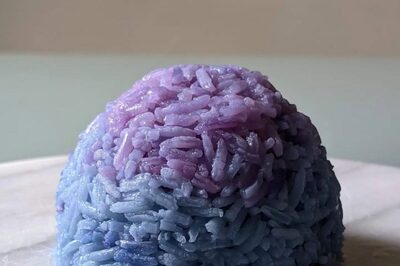
views
Extraterrestrial events — the collision of faraway black holes, a comet slamming into Jupiter — evoke wonder on Earth but rarely a sense of local urgency. By and large, what happens in outer space stays in outer space.
A study published Wednesday in Science Advances offered a compelling exception to that rule. A team of researchers led by Birger Schmitz, a nuclear physicist at Lund University in Sweden, found that a distant, ancient asteroid collision generated enough dust to cause an ice age long ago on Earth. The study lends new insight to ongoing efforts to address climate change.
“We’ve shown that what happens in the solar system can have a big influence on Earth,” said Philipp Heck, a curator of meteorites at the Field Museum of Natural History in Chicago and an author of the study. “Extraterrestrial events aren’t always destructive. Many people think about meteorites as just dinosaur killers, but we found the opposite. A big collision in the asteroid belt had constructive consequences that led to cooling and biodiversification.”
Earth is frequently exposed to extraterrestrial matter; 40,000 tons of the stuff settle on the planet every year, enough to fill 1,000 tractor-trailers. But 466 million years ago, a 93-mile-wide asteroid collided with an unknown, fast-moving object between Mars and Jupiter. The crash increased the amount of dust arriving on Earth for the next 2 million years by a factor of 10,000. Schmitz, Heck and their team found that the dust triggered cooling in Earth’s atmosphere that led to an ice age.
In sufficient amounts, extraterrestrial dust can cool Earth by blocking the amount of solar radiation that reaches the surface. Because the dust from the asteroid collision accumulated gradually, the planet cooled gradually, allowing plant and animal species to adapt as sea levels dropped and temperatures declined by as much as 50 degrees Fahrenheit.
“Our study is the first time it has been shown that asteroid dust actually helps cool Earth to a dramatic extent,” Schmitz said.
The team derived their evidence from a study of fossil meteorites, extraterrestrial materials that long ago became embedded in Earth’s rocks. They are so rare, Heck called them “Mona Lisas.”
The first was found in a Swedish limestone quarry in 1952, but it was shelved by an unsuspecting paleontologist and wasn’t properly identified for another 27 years. In 1979, when a mineralogist realized the extraterrestrial origins of the rock, he prompted a systematic search for more in Swedish quarries. Researchers found 130 meteorites over the next two decades.
Of these, Schmitz and his team determined that 129 derived from the same asteroid breakup. The meteorites were analyzed to determine their chemical composition, and their level of cosmic ray exposure was measured to confirm their outer-space origins and pin down when they arrived on Earth.
By tracing the increase in the meteorites of certain isotopes, researchers were able to determine that extraterrestrial dust began to reach Earth about 50,000 years after the asteroid collision. A worldwide ice age began roughly 10,000 years later, during the Ordovician Period.
“We’re talking about gentle changes that happened over 2 million years,” Heck said. “If we could travel back in time, it wouldn’t appear as a catastrophe to us; it would be more like a gentle nudge that led to global change and triggered diversification.”
When the team started its research, they hypothesized that the collision might have increased dust levels by a hundredfold. The chemical analysis soon revealed that dust levels had risen far more, by a factor of 10,000, an increase sufficient to markedly alter Earth’s climate.
Schmitz and his team believe their findings shed light on a mechanism that could eventually be used to counteract global warming. In their paper, they proposed that an asteroid could be captured and brought to one of the Lagrange points between the sun and Earth — an unstable zone where the gravitational pull of each is equal — allowing it to produce dust that blocks sunlight. They are not the first scientists to suggest using extraterrestrial dust for global cooling.
However, Heck emphasized that their findings are only a basis for investigation. “Putting a rock into an unstable point that could make it fall into Earth has me worried,” he said. “A small asteroid wouldn’t cause a global extinction, but it could cause a local catastrophe or wipe out a city in the worst case.”
At the very least, Schmitz said, the study will help people appreciate Earth’s connection to the rest of the solar system: “Geologists often think of nothing outside Earth. You have to understand what happens in space to get the full picture of what’s happened on Earth.”
Emma Goldberg c.2019 The New York Times Company



















Comments
0 comment